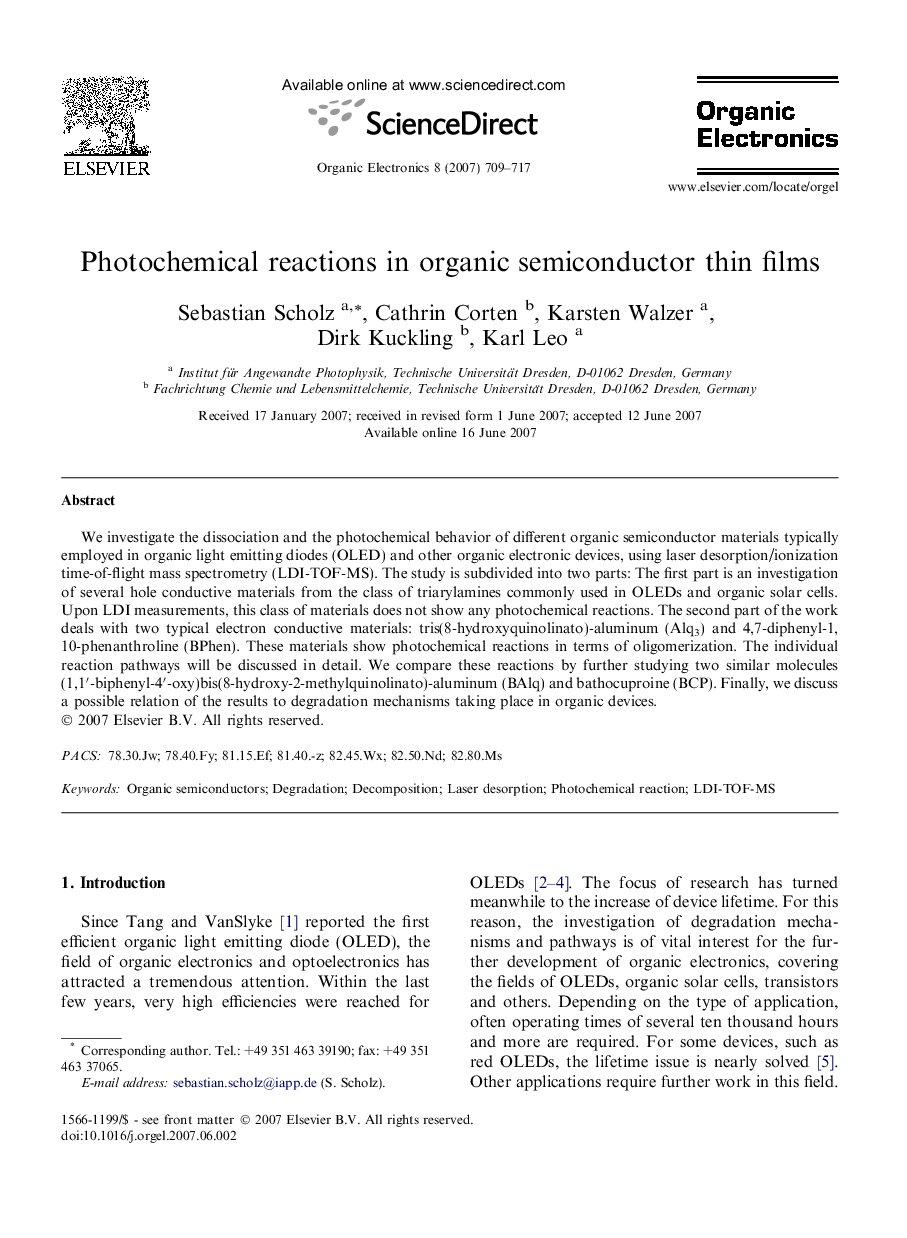| Article ID | Journal | Published Year | Pages | File Type |
|---|---|---|---|---|
| 1265244 | Organic Electronics | 2007 | 9 Pages |
We investigate the dissociation and the photochemical behavior of different organic semiconductor materials typically employed in organic light emitting diodes (OLED) and other organic electronic devices, using laser desorption/ionization time-of-flight mass spectrometry (LDI-TOF-MS). The study is subdivided into two parts: The first part is an investigation of several hole conductive materials from the class of triarylamines commonly used in OLEDs and organic solar cells. Upon LDI measurements, this class of materials does not show any photochemical reactions. The second part of the work deals with two typical electron conductive materials: tris(8-hydroxyquinolinato)-aluminum (Alq3) and 4,7-diphenyl-1,10-phenanthroline (BPhen). These materials show photochemical reactions in terms of oligomerization. The individual reaction pathways will be discussed in detail. We compare these reactions by further studying two similar molecules (1,1′-biphenyl-4′-oxy)bis(8-hydroxy-2-methylquinolinato)-aluminum (BAlq) and bathocuproine (BCP). Finally, we discuss a possible relation of the results to degradation mechanisms taking place in organic devices.
